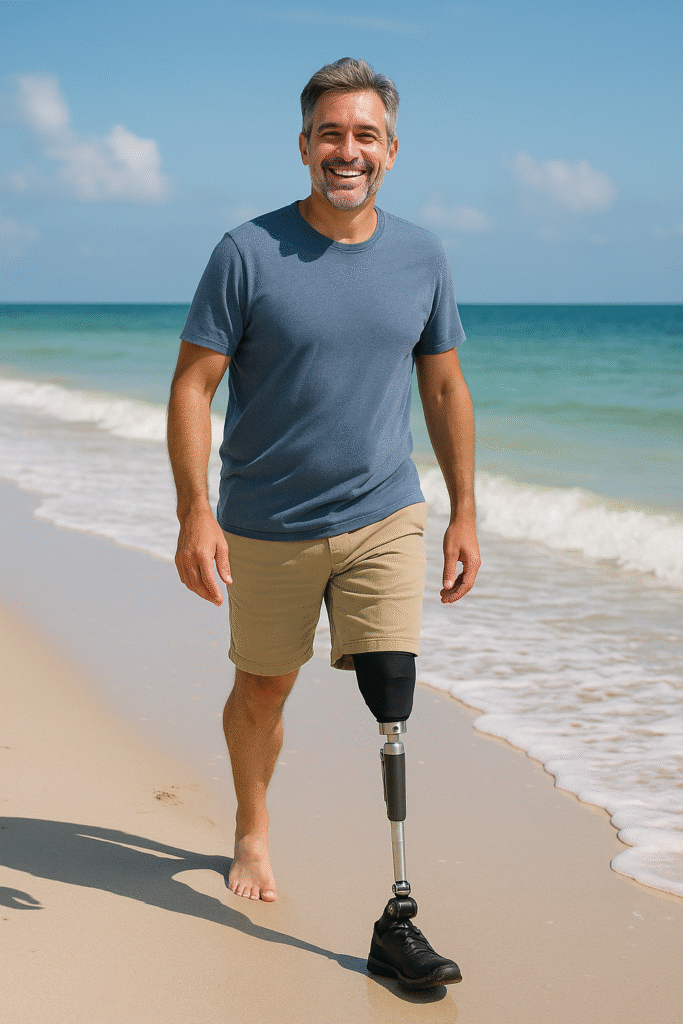
Intro:
For people living with above-knee (transfemoral) amputations, socket prostheses have long been the standard of care. However, many experience discomfort, poor suspension, or limited mobility. Recent advances in bone-anchored prostheses (BAP)—which connect directly to the femur through osseointegration—offer a potential breakthrough. A 2025 meta-analysis published in Orthopaedic Surgery examined whether these implants truly improve quality of life (QoL) and mobility compared to traditional socket systems.
Key Findings:
- Study overview:
Researchers analyzed 13 clinical trials including 398 transfemoral amputees across multiple countries. Each study compared patients’ quality of life and walking ability before and after receiving bone-anchored prostheses. - Major outcomes:
- Quality of life scores (Q-TFA and SF-36) improved significantly across nearly all domains, particularly in prosthetic use, mobility, and global satisfaction.
- Physical health scores (SF-36 PCS) increased notably, while mental health scores (SF-36 MCS) showed little or no change.
- Walking performance improved dramatically—average distance in the six-minute walk test rose from 312 m with socket prostheses to 519 m with bone-anchored systems.
- Implant comparison:
Whether the device used a press-fit or screw-type connection did not significantly affect quality-of-life results. - Safety and complications:
Mild infections were relatively common but typically manageable. Serious issues such as implant loosening or bone loss were rare but possible. - Who benefits most:
BAP currently benefits patients struggling with socket-related skin irritation, sweating, or poor suspension—those who cannot tolerate conventional sockets.
Why It Matters:
This large review confirms that bone-anchored prostheses can meaningfully improve comfort, mobility, and independence for above-knee amputees. By eliminating the socket interface, patients often regain greater limb control and confidence in daily movement.
However, because of surgical complexity, infection risk, and higher cost, BAPs are not yet recommended as a first-line solution for all amputees. They remain best suited for individuals who have significant socket-related complications and meet medical eligibility criteria.
Conclusion:
Bone-anchored prosthetic systems represent a promising evolution in amputation rehabilitation—helping many regain mobility and improve quality of life. As research continues and surgical techniques advance, these implants may become more widely available options.
If you’re an above-knee amputee experiencing ongoing socket discomfort, talk to your prosthetist or physician about whether bone-anchored prosthesis evaluation may be right for you.
Reference:
Tan J, Zilani N, Karim R, Patel B. Comparison of Quality of Life in Transfemoral Amputee Using Bone-Anchored Prostheses vs. Socket Prostheses: A Systemic Review and Meta-Analysis. Orthopaedic Surgery. 2025; 17: 2234-2254. https://doi.org/10.1111/os.70086